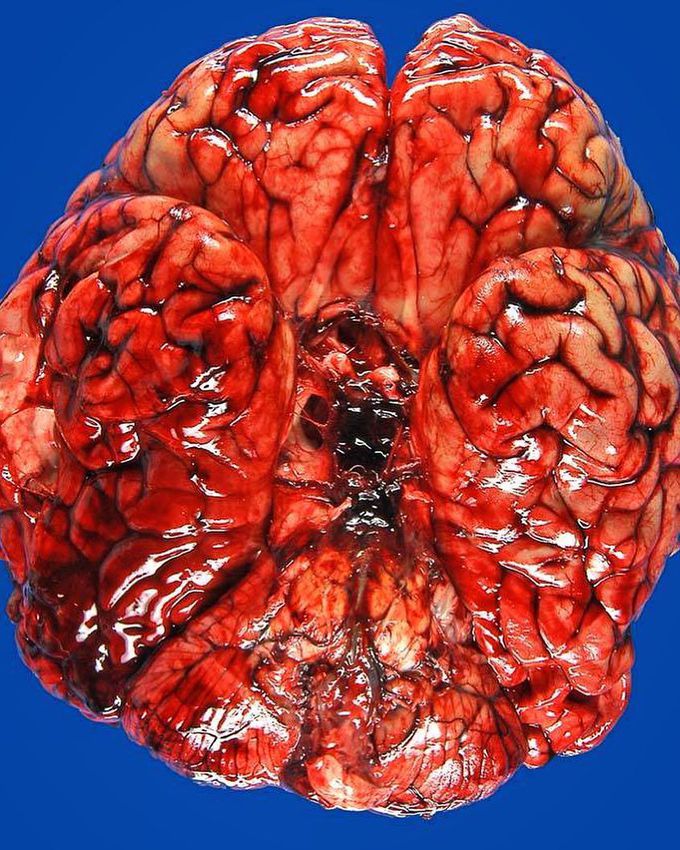


Ruptured aneurysm at the base of the brain that resulted in subarachnoid hemorrhage!
Notice the dark hematoma at the center at this brain autopsy. This happened due to extravasation of blood into the subarachnoid space between the pial and arachnoid membranes surrounding the entire brain. It occurs in various clinical contexts, the most common being head trauma. However, the familiar use of the term subarachnoid hemorrhage refers to nontraumatic (or spontaneous) hemorrhage, which usually occurs in the setting of a ruptured cerebral aneurysm (weaknesses in the wall of the arteries of the brain that enlarge and its rupture leads to severe bleeding) or arteriovenous malformation. The classic symptom is thunderclap headache ("most severe ever" headache developing over seconds to minutes), and is often described like being "kicked in the head". Other symptoms may be vomiting, seizures, photophobia, loss of consciousness and meningism, but these are significantly less common and non-specific. Due to its acute onset, it is a medical emergency which can lead to death or severe disability even if recognized and treated in an early stage. Surgical treatment to prevent rebleeding includes clipping the ruptured aneurysm or endovascular treatment (ie, coiling).
My dad suffered a subarachnoid hemorrhage back in the year 2000. It was a Friday the 13th and also a full moon, which only happens every 18 years! He survived. Spent by 72 days in hospital!

